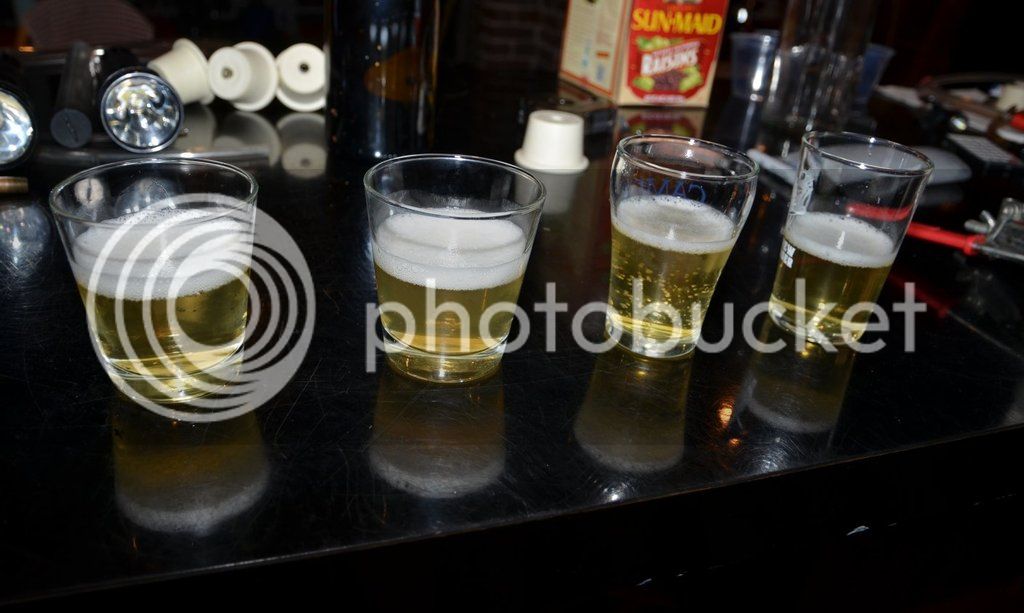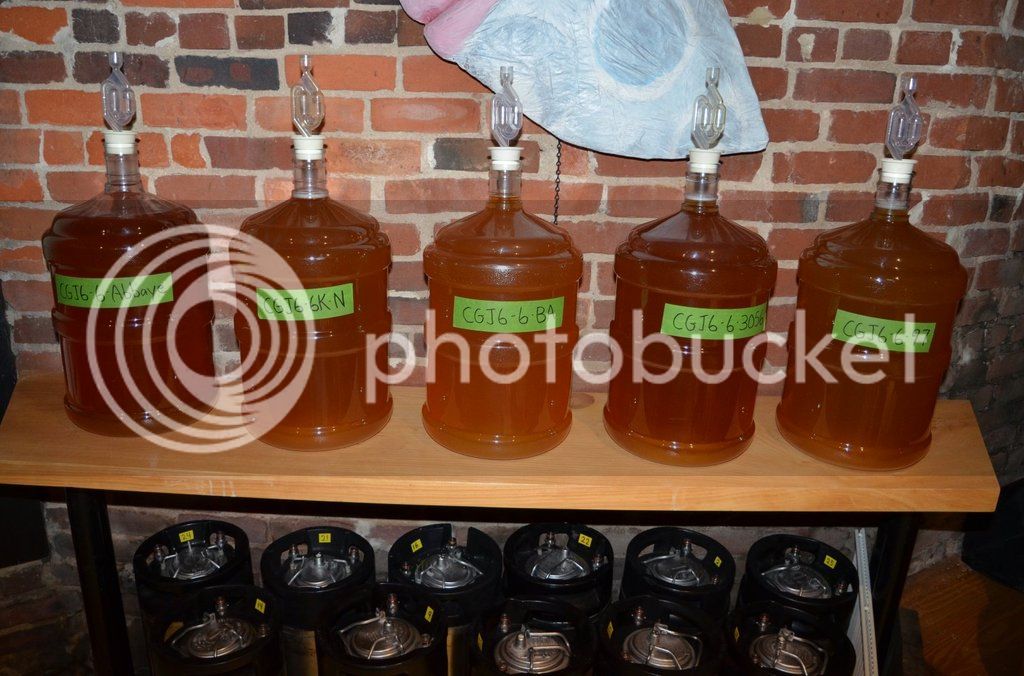This past week I kegged all 10 of the secondary carboys that have been sitting in the basement.
All 10 of them got nice and clear even the two that were from previous pressings and took a little longer to clear than the others. The other 8 were all from the Jan 14 pressing, and they have mostly been clear for a couple of months. Here are the notes on tasting, as they went into kegs:
From Jan 14th pressing (Stayman, Pink Lady, Albemarle Pippen, Winesap apples)
Unsulfited Abbaye 1.008 Super clear, smells and tastes great. The flavor is a little sharper than some of the ale yeast batches, but also more appley. I put this keg on tap.
Unsulfited Brupaks 1.008, very clear smells good, tastes just a little tangy, which works at this stage, but I think it is starting to turn. I tasted this a month ago and at that point I liked it better. It was cleaner and smoother, so its just in the past month that its started to turn. Its still very drinkable though and I put it on tap. I think most people will like the little extra tang, but to me its a sign that this keg needs to be consumed fairly quickly
Sulfited Abbaye 1.008 Super clear, tastes great and has a ton of flavor, just like the unsulfited batch, but just a bit of an eggy smell when you first pour a glass. The Abbey yeast doesnt like sulfite and this batch really stunk up the basement when it was fermenting (the unsulfited Abbaye batch smelled fine). Also has just a bit of kmeta bitterness compared to the unsulfited batch, but its fairly faint and could pass for tannin. I used a full dose of kmeta on these and it will probably be another couple of months before its not noticeable at all. By then the eggy smell should be gone as well. If not, a couple cycles of force carbonating and purging the keg will get it out.
Sulfited Brupaks 1.008 Clear. Taste is nice, very full, with a nice clean finish. Doesnt have any kmeta bitterness, but slightly sulfury
Sulfited Nottingham 1.010 Super clear, tastes great, maybe just a tad of kmeta bitterness, which passes for tannin. No sulfur, Clean and appley. It tastes drier than 1.010. very drinkable.
Sulfited S23 1.006 Very clear, tastes good, definitely on the dry side but still has a nice apple flavor. No sulfur or kmeta bitterness. The S23 batch also stunk up the basement during fermentation, but seems to have cleared itself up better than the sulfited Abbaye batch. It has a bit of a quinine flavor, which works for a dry cider
Sulfited Wy3056/Brupaks 1.010 Very clear, tastes great. No sulfur or kmeta bitterness. It has more of a Wy3056 flavor than a Brupaks flavor. When I pitched the Wy3056, the pack did not swell much after 6 hours and there was no sign of fermentation after 24 hours, so I tossed in a back of Brupaks, but something must have been happening with the Wy3056 because it has a signature flavor that is in this batch
Sulfited Wy3068 1.014 Very clear, tastes great. No sulfur or kmeta bitterness. More of a juicy flavor than the ale yeast batches
From other pressings:
All Stayman, pressed 10/18/15, no sulfites. 1.012, clear, tastes great. I pitched Brupaks, but I let it get too cold and it never took off, so it was mostly a wild yeast ferment, which is what it tastes like. In early Jan I added an ounce of oak chips, which IMHO work nice with a wild yeast batch. This will probably be the next one that I put on tap as soon as I kill another keg to make stome space. This batch looked like it was never going to clear, but it just cleared up in the past month or so.
Stayman, Winesap Pippen, pressed 11/5/15 Unsulfited BRY97- clear, and definitely starting to turn. Unlike the unsulfited Brupaks batch from the Jan pressing, this one is a little too far gone to taste good on its own IMHO, but a little bit of maple syrup takes the acidic edge off and makes it drinkable. This one also took forever to clear and just cleared up in the past month





